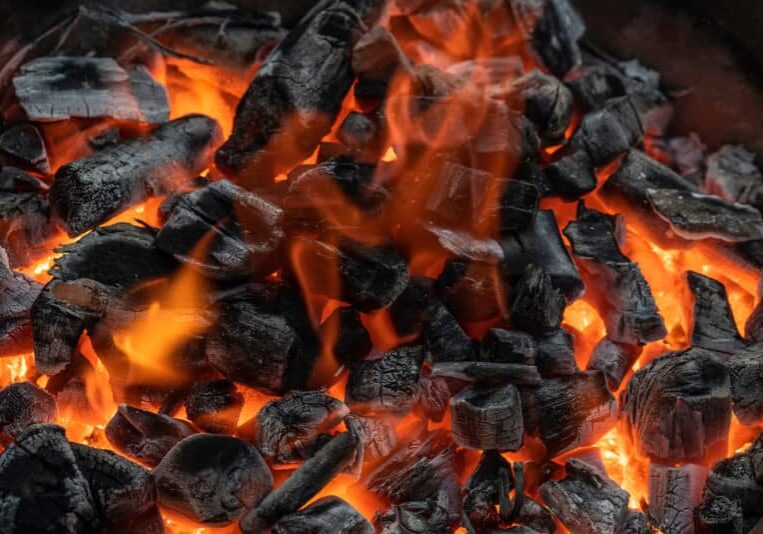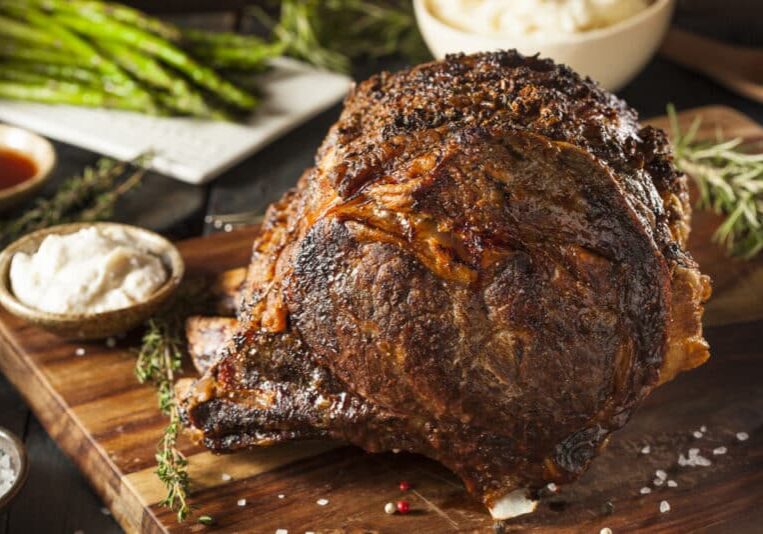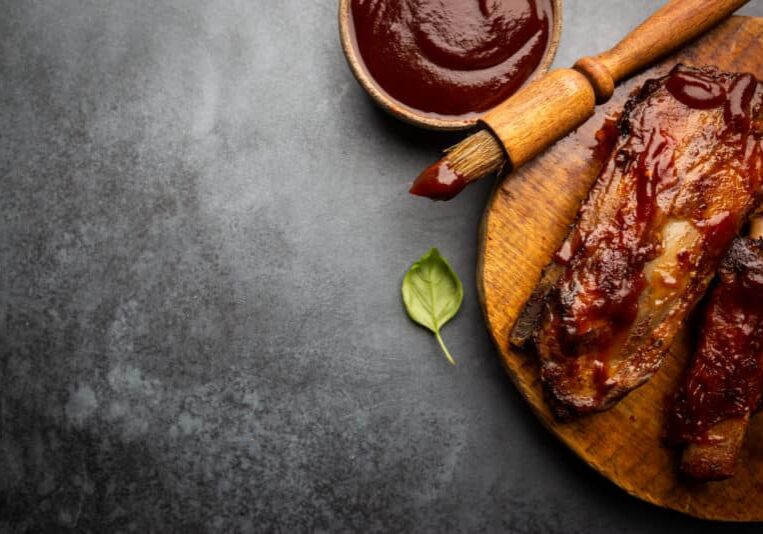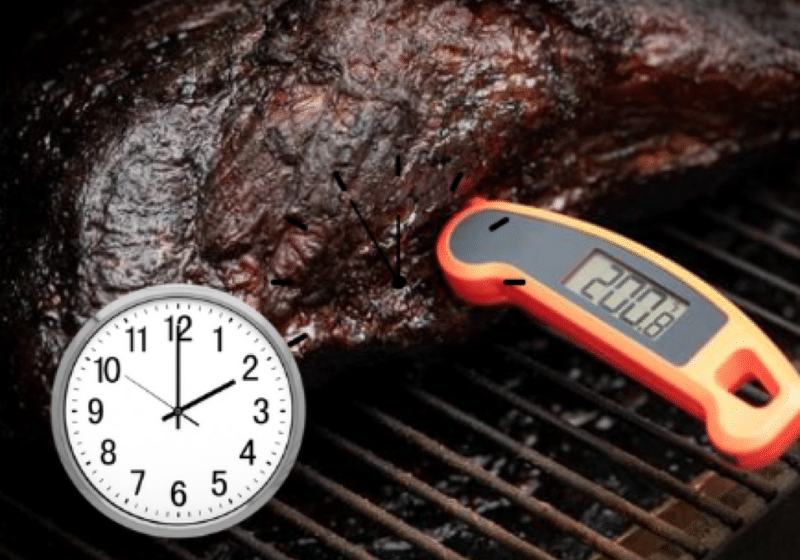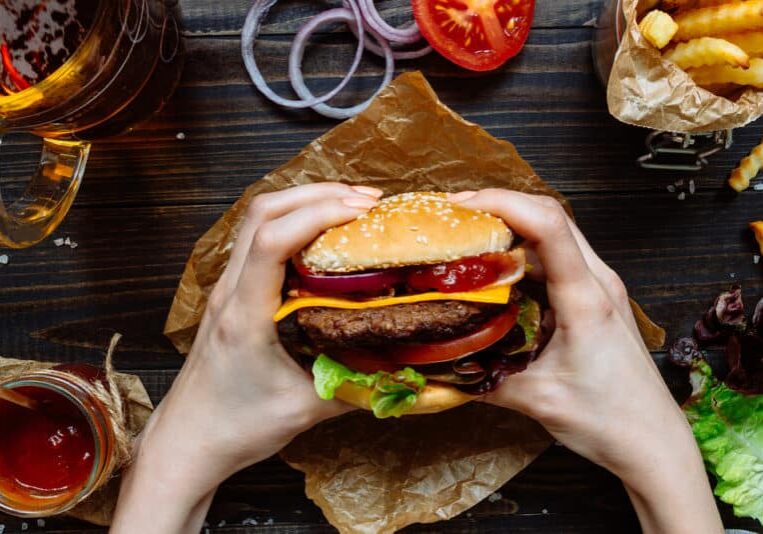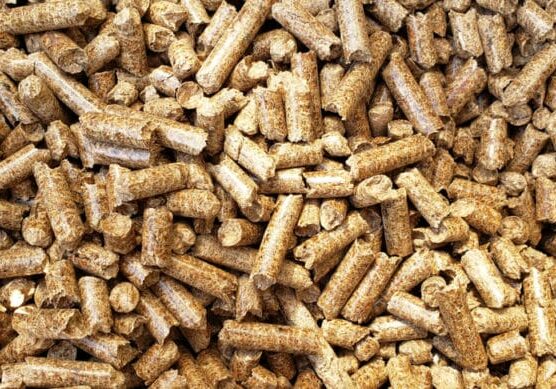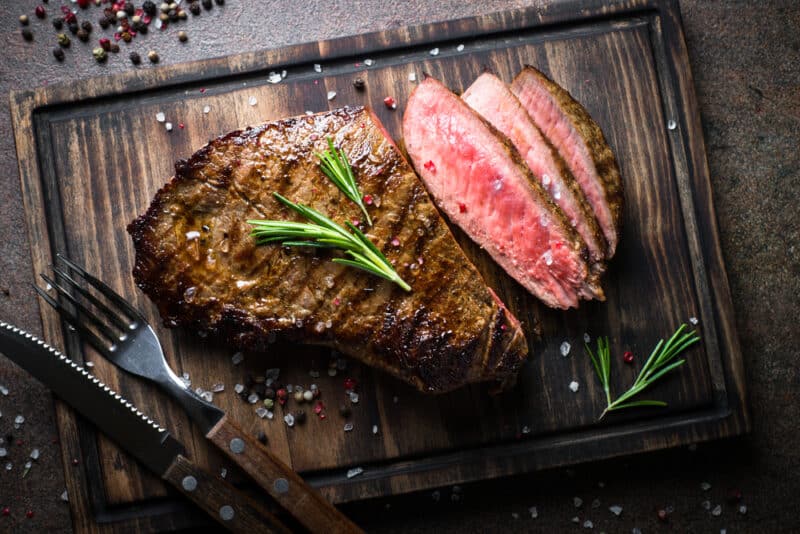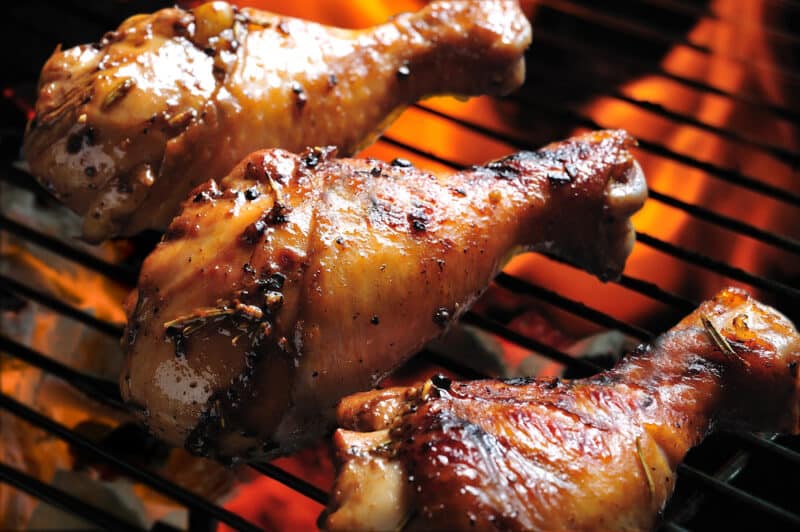How to Tell Whether Raw Steak is Bad
TheGrillingMaster.com is reader-supported. If you buy something using the links on our site, we might earn an affiliate commission at no added cost to you. This helps us pay our staff to keep making awesome content for you!
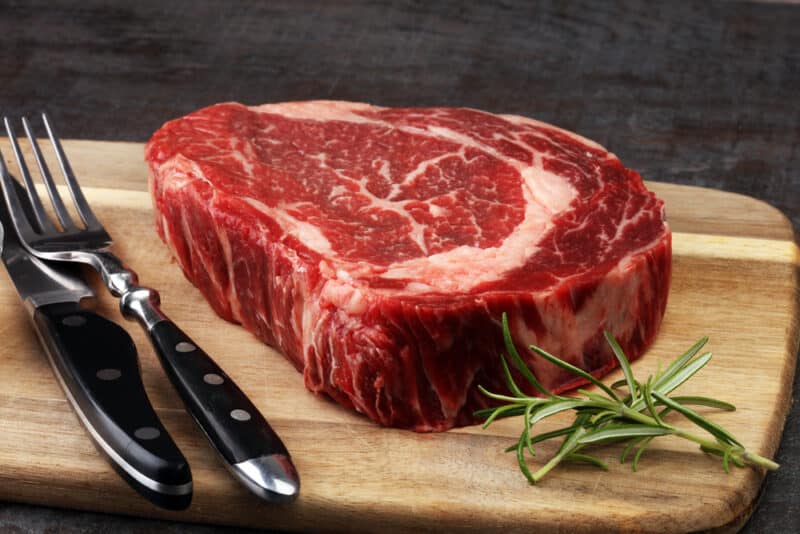
Steak is a beloved meat that many people enjoy.
Whether you prefer your steak rare, medium-rare, or well-done, there’s nothing quite like a juicy and flavorful steak!
You can definitely eat raw steak. Just be careful that you don’t end up eating spoiled or bad steak can have serious health consequences.
Here’s how to tell whether raw steak is bad.
The first thing to look for when determining whether raw steak is bad is its appearance. The steak should have a bright red color with marbling throughout the meat. Your steak could be spoiled if it has a gray or brown color or looks dry. If there are any signs of discoloration, such as green or blue spots, the steak is definitely bad and should not be consumed.
Second, you should use your sense of smell to determine whether raw steak is bad.
Related >> How to grill a frozen steak.
Fresh steak should have a slightly sweet smell and it may have a slight metallic odor from the iron in the meat. If the steak smells sour, rotten, or like ammonia, it has gone bad and should not be eaten.
These smells are a clear indication that the steak has begun to spoil, and consuming it could lead to food poisoning. If the steak passes the appearance and smell test, the next step is to touch it.
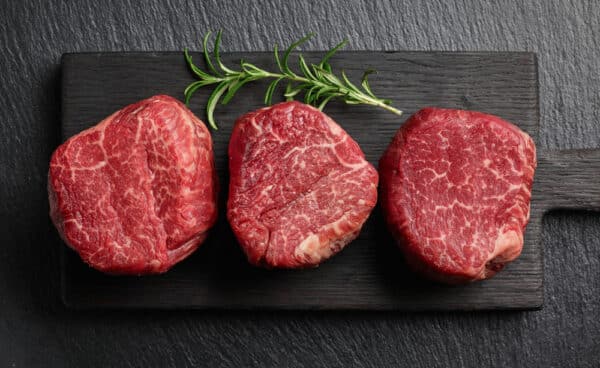
Fresh steak should feel firm and slightly moist to the touch. If the meat feels slimy, sticky, or tacky, it has started to spoil. You should also see if the steak is slimy on the surface or has any visible mold – if it does, it is definitely bad and should not be consumed.
The last step in determining whether raw steak is bad is to consider its age.
Fresh steak should be consumed within three to five days of purchase. We have a guide here if you want to know the best way to reheat your steak.
And it should be stored at a temperature below 40 degrees Fahrenheit to prevent bacterial growth.
Here is a good rule of thumb when preparing raw meat: If the steak has been sitting in the refrigerator for more than five days or has been left out at room temperature for more than two hours.
It’s important to remember that consuming spoiled or bad steak can lead to serious health consequences, such as food poisoning.
Symptoms of food poisoning include:
- nausea,
- vomiting,
- diarrhea,
- stomach cramps,
- and fever.
Sometimes food poisoning can require hospitalization and may even be fatal. Seek medical attention immediately if you suspect that you have consumed bad steak or are experiencing symptoms of food poisoning, .
Overall when determining whether raw steak is bad requires careful inspection of its appearance, smell, touch, and age.
One our of favorite – and not very traditional – methods of cooking steak is to smoke your steak! You can see our steak smoking guide here.
Related reading: The benefits of eating raw meat
Can I order raw steak at a restaurant?
In both the US and the UK, it is uncommon to find restaurants that are willing to serve raw steak.
The majority of establishments, including traditional steakhouses, may be hesitant due to concerns about potential negative outcomes.
To determine if a restaurant accommodates such requests, contacting them in advance would be the best course of action.
If a restaurant does not serve raw steak, an alternative option would be to inquire if they can prepare the steak as “blue” as possible, which comes closest to the desired rawness.
Restaurant alternatives if they wont serve raw steak
If a restaurant refuses to serve raw steak, there are alternative options available:
- One possible solution is to contact the restaurant beforehand and inquire about their policy on serving raw meat.
- If they do not offer raw steak on their menu, you can consider asking if they would be willing to prepare the steak as rare as possible, also known as “blue” in culinary terms. While not the exact same as raw, this could be a close alternative that provides a similarly rare and minimally cooked experience.
How to make your own raw beef dishes at home
It is indeed possible to make your own raw beef dishes at home, but it is crucial to follow certain safety measures to ensure that you minimize the risk of potential harm.
Firstly, it is essential to source your raw beef from a reputable and reliable supplier. By doing so, you can ensure that the beef is of good quality and comes from a trusted source.
Additionally, freshness is key when it comes to working with raw beef. Make sure that the meat is as fresh as possible to further reduce any potential health risks. By properly observing the necessary safety precautions, you can create your own delicious raw beef dishes right in the comfort of your own kitchen.
What is steak tartare and how is it prepared?
Steak tartare is a popular French dish that originated in the early twentieth century and was initially known as steack à l’Americaine. It is traditionally made by finely mincing or chopping high-quality beef, which is served raw. The dish derives its name from its original accompaniment – tartare sauce.
To prepare steak tartare, the minced or chopped beef is typically seasoned with various ingredients like capers, gherkins, and onions. These additions not only enhance the delicate flavor of the beef but also provide texture and depth to the dish. A raw egg yolk is commonly placed on top of the beef, adding richness and creaminess to the mixture.
Once the beef has been seasoned and topped with the egg yolk, steak tartare is typically served alongside toasted bread. The toast serves as a vessel for enjoying the flavorful combination of the raw beef and the richness of the egg yolk. It provides a contrast of textures as well.
It is important to note that the usage of high-quality, fresh beef is crucial in the preparation of steak tartare, as the dish is served raw. This ensures both the safety and the exceptional taste of the final dish.
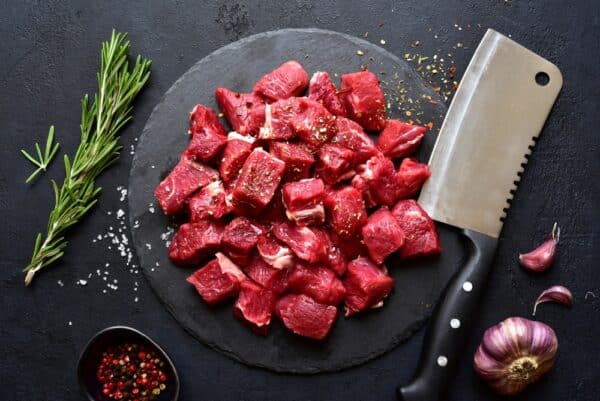
What is the importance of keeping raw beef chilled?
Keeping raw beef chilled is of utmost importance due to its critical role in minimizing bacterial growth and ensuring the safety of the meat. By maintaining a temperature below 40°F (4.4°C), the growth of harmful bacteria is significantly inhibited. This not only reduces the risk of foodborne illnesses but also helps preserve the quality and freshness of the beef.
Chilling raw beef effectively slows down the activity of bacteria, preventing it from multiplying rapidly and reaching dangerous levels. This is especially crucial as certain bacteria, such as salmonella and E. coli, can be present in raw beef and can cause severe gastrointestinal issues if consumed in large quantities.
Additionally, prompt consumption of chilled raw beef further limits bacterial growth. By consuming the meat as soon as possible, you minimize the time frame in which any existing bacteria can multiply and potentially cause harm.
It is worth noting that freezing raw beef, while it may serve as a preservation method, can adversely affect its quality. The freezing process can result in a degradation of the meat’s texture and taste. As a result, it is generally recommended to consume raw beef while it is fresh and properly chilled rather than resorting to freezing methods.
In summary, maintaining the appropriate cold temperature for raw beef is crucial as it inhibits bacterial growth, enhances meat safety, and preserves its overall quality.
How can one find a reputable source of raw beef?
To discover a reputable source of raw beef, it is advised to steer clear of the supermarket meat aisle.
Instead, consider contacting your local butcher who possesses the knowledge and ability to procure fresher beef.
Not only can they inform you about the origins of the beef they provide, but they can also guide you in obtaining beef that is organic, grass-fed, and pasture-raised. These types of beef typically have a lower presence of parasites and bacteria due to the healthier immune systems of the animals compared to those raised in factory farms.
If your preference lies in avoiding meat with additives and supporting ethically raised practices, your local butcher would be an excellent starting point for your search.
Tips for eating raw beef safely
To consume raw beef safely, here are some tips to keep in mind:
1. Choose a reputable source: When seeking fresh raw beef, it’s best to avoid supermarket meat aisles. Instead, visit a reliable local butcher who can provide fresher beef and offer information about its origin. Opting for organic, grass-fed, or pasture-raised beef can also lower the risk of parasites and bacteria since these animals have healthier immune systems compared to those raised in factory farms.
2. Mince the beef yourself: If you need raw beef mince, it’s advisable to buy a cut of meat and mince it at home. Mincing exposes a larger surface area, and bacteria tend to concentrate on the meat’s surface. By mincing the meat as close to consumption as possible, you can reduce bacterial growth.
3. Keep it chilled: Proper storage is crucial for minimizing bacterial growth and ensuring the safety of raw beef. It’s essential to keep the beef chilled at all times below 40°F (4.4°C). This temperature range helps prevent bacterial multiplication. Consuming the raw beef as soon as possible limits bacterial growth even further.
4. Recognize signs of spoilage: Raw beef that has gone bad usually exhibits a sour smell, unpleasant taste, and slimy texture. If you notice any of these indications, it’s time to discard the meat. It’s crucial to be cautious and not consume raw beef that has been stored for more than a day or two, as the risk of foodborne illnesses increases significantly.
Remember, when in doubt, prioritize food safety and err on the side of caution.
Why is raw chicken considered more dangerous than raw beef?
Raw chicken is generally considered to be more dangerous than raw beef due to the higher likelihood of it being contaminated with harmful bacteria such as Salmonella and E. coli. These bacteria can naturally thrive in raw chicken and pose a significant risk to human health if ingested. On the other hand, raw beef typically carries fewer bacteria that can cause illness in humans.
Additionally, when compared to raw pork and chicken, raw beef has relatively few parasites that can infect the human digestive system. For instance, raw pork, especially from animals raised in factory farms, can carry Trichinosis and worm cysts, which have the potential to infest humans. Such parasites are not as commonly found in raw beef.
Moreover, the texture and taste of raw chicken and pork are generally less appealing compared to raw beef. This is evident in the fact that you rarely encounter dishes like pork or chicken tartare in restaurants. Raw beef, on the other hand, offers a more favorable texture and taste, making it a more popular choice for raw preparations.
Overall, the combination of higher bacterial contamination, increased parasite prevalence, and comparatively unappealing sensory characteristics make raw chicken more dangerous than raw beef.
What are the concerns regarding parasites in raw beef?
Concerns regarding parasites in raw beef stem from the potential health risks they pose to humans. Unlike raw chicken, which is known to harbor high concentrations of Salmonella and E. coli, and raw pork, which can carry Trichinosis and worm cysts, raw beef typically has lower levels of parasites that can infest the human digestive system. However, it is important to note that not all meats carry the same level of risk when consumed raw.
The way animals are raised and the conditions in which their meat is stored play a significant role in the prevalence of parasites. Beef, compared to other meats such as pork and chicken, tends to have fewer parasites due to the different farming practices and the compatibility between humans and the parasites these animals can carry.
While bacteria such as Salmonella and E. coli can still be present in raw beef, their levels are generally lower compared to raw chicken. Additionally, there are specific regulations and inspections in place to minimize bacterial contamination in the beef industry, further reducing the risk.
Moreover, raw pork and chicken tend to have an unappetizing texture and taste when consumed raw, which is why you rarely come across pork or chicken tartare in restaurants. On the other hand, raw beef can be enjoyed in various delicacies around the world, indicating that it can be both safe and delicious when prepared properly.
Overall, while concerns regarding parasites exist when consuming raw beef, the risks are relatively lower compared to other meats. Proper handling, sourcing from reputable suppliers, and ensuring thorough cooking when necessary can significantly mitigate these concerns and allow individuals to safely enjoy raw beef dishes.
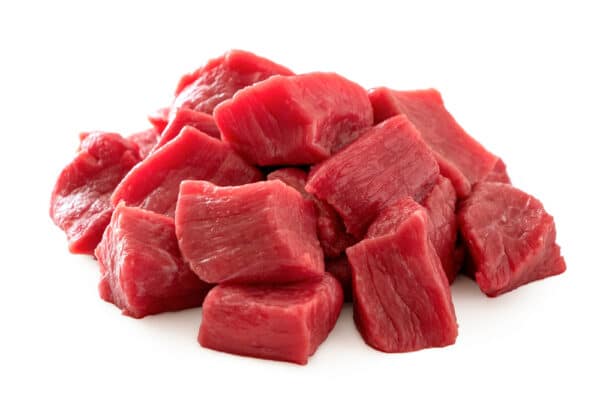
What are the differences between raw beef dishes served in restaurants and supermarket minced beef?
When it comes to comparing raw beef dishes served in restaurants and supermarket minced beef, there are several noteworthy differences. Firstly, fresh beef steak, which is typically used in restaurant dishes like steak carpaccio, is stored under specific temperature conditions of 40°F (4.4°C) or lower and handled with great attention to food safety protocols. As a result, it tends to harbor a significantly lower concentration of bacteria compared to supermarket minced beef.
One reason for this disparity is that supermarket minced beef can come from multiple carcasses, meaning it is a blend of meat from various sources. In contrast, steak carpaccio in restaurants typically uses a specific cut, such as a fillet or sirloin, from a single carcass. The practice of using mixed sources for minced beef, coupled with the fact that it is often stored for longer periods before being sold, can increase the potential for bacterial growth.
Furthermore, the surface area of minced beef is significantly larger compared to a solid piece of steak. This greater surface area provides an ideal environment for bacteria to multiply. In contrast, the surface area of a steak is comparatively smaller, making it less prone to bacterial growth.
The cooking process also plays a role in reducing the bacterial risk. For instance, when ordering a blue steak from a reputable restaurant, the surface of the steak is typically seared for a brief period, which helps to eliminate or reduce the concentration of bacteria on the surface. Similarly, in the case of steak carpaccio, the thin slices of steak are often marinated or seared, ensuring that any bacteria present are minimized.
In contrast, pre-minced beef and most beef bought directly from the supermarket are generally not considered safe for raw consumption. Due to the aforementioned factors, such as multiple sources, prolonged storage, and larger surface area, the risk of bacterial contamination is higher.
In summary, the differences between raw beef dishes served in restaurants, like steak carpaccio, and supermarket minced beef are: the sourcing and storage of the meat, the surface area of the meat, and the cooking methods used, all of which contribute to varying levels of bacterial risk.
How does cooking affect the bacteria in raw meat?
Cooking plays a crucial role in eliminating harmful bacteria present in raw beef. Raw meat has the potential to be contaminated with foodborne pathogens such as Salmonella, Escherichia coli (E. coli), Shigella, and Staphylococcus, all of which can cause food poisoning. However, the cooking process effectively eradicates these bacteria when the internal temperature of the meat reaches above 145°F (63°C).
By subjecting raw meat to temperatures above 145°F (63°C), the heat acts as a potent weapon against the bacteria lurking within. This high temperature is lethal to the pathogens, effectively killing them off and reducing the likelihood of infection. Even cooking steak to a medium-rare internal temperature of 135°F (57°C) or rare at 125°F (52°C) can still decrease the number of potential bacteria present, but it is not as effective as cooking the meat to a temperature of at least 145°F (63°C).
Therefore, cooking raw meat to the recommended temperature is essential to ensure the elimination of foodborne pathogens. Through thorough and proper cooking, we significantly reduce our chances of contracting a foodborne illness caused by the bacteria commonly found in raw beef.
What are the health risks associated with uncooked beef?
Eating raw beef can pose several health risks. Raw meat may be contaminated with various foodborne pathogens, including Salmonella, Escherichia coli (E. coli), Shigella, and Staphylococcus. These bacteria can cause food poisoning, leading to symptoms such as nausea, vomiting, diarrhea, and abdominal pain.
To reduce the risk of infection, it is commonly advised to avoid consuming raw meat. Cooking beef to a temperature above 145°F (63°C) is generally considered effective in killing off these harmful bacteria. Medium-rare steak cooked to 135°F (57°C) or rare steak cooked to 125°F (52°C) may diminish the number of potential bacteria present, but it is not as reliable as cooking to the recommended temperature of 145°F (63°C).
Learn More About Grilling
If you want to learn more about grilling, check out these other helpful resources!

Patrick Harvey
Patrick is a life long grilling enthusiast with an eye for product development and user experience. His expertise helps us test and review all of the products you see the website.
About The Grilling Master
Hi there, I'm Kevin Turner, Founder and CEO of thegrillingmaster.com.
My passion has always been grilling, smoking and BBQ delicious meats that satisfy my inner carnivore!
I started this website to share my passion and knowledge with you, the hungry reader who wants to prepare the perfect meal.
You can leverage my years of experience as a pit master and professional.
Send me a message and let's connect on Twitter here.


